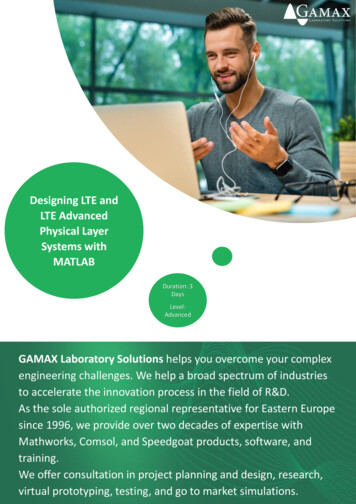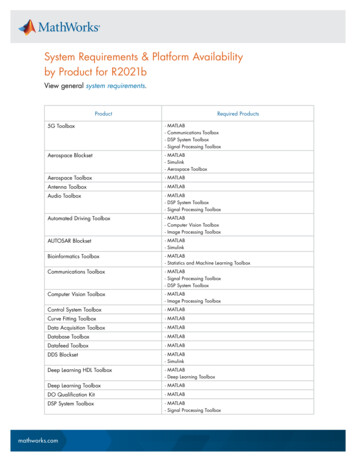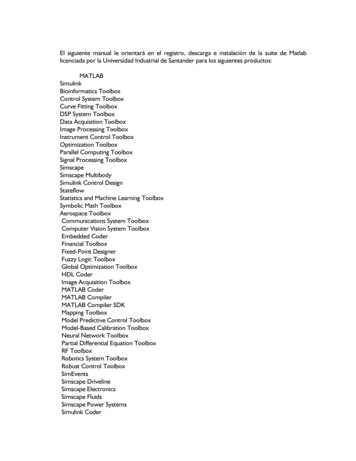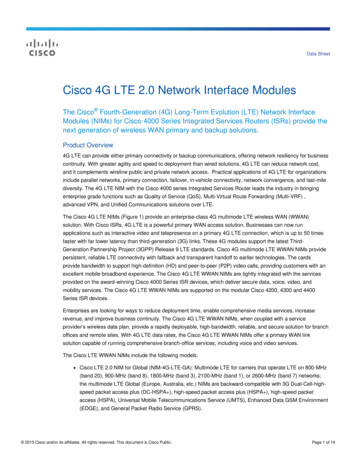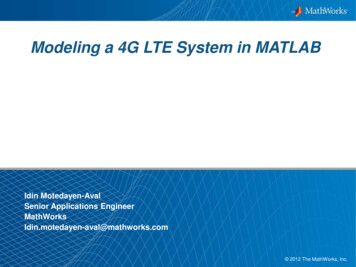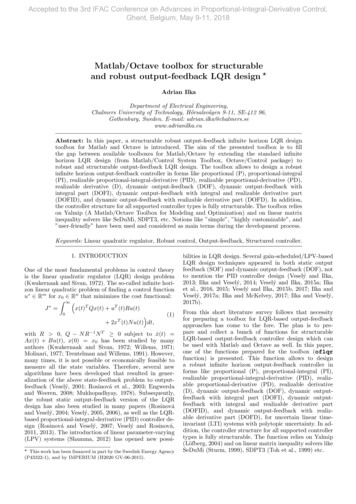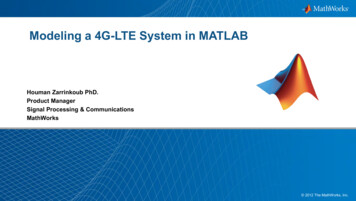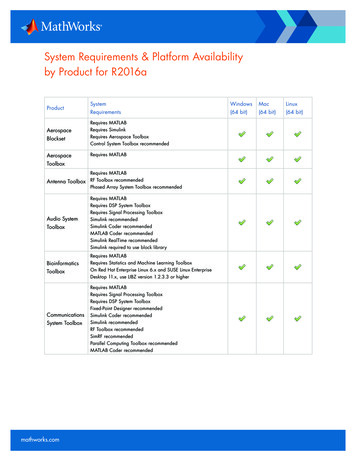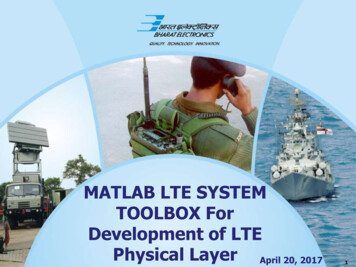
Transcription
MATLAB LTE SYSTEMTOOLBOX ForDevelopment of LTEPhysical Layer April 20, 20171
MATLAB EXPO 2017T PushpalataChaitanya P. UmbareShashikant Y. Chaudhari2
Outline Problem Statement: The Requiremento Challenges in LTE PHY Developmento WHY MATLAB LTE System Toolbox? LTE Physical Layer Development in 3 stageso Stage 1o Stage 2o Stage 3 Development Setup Results Conclusion3
PROBLEMSTATEMENT4
IntroductionHigher DataRateLowerLatencyHigher SpectralEfficiencyHigherCapacity5
The requirement was to develop and prototype LTEPhysical Layer for:o Concept provingo Capturing system requirement6
CHALLENGES INDEVELOPINGPHY LAYER7
Challenge #1: Reading and understanding the specs Challenge #2: Creating an executable spec toinvestigate system performance and act as a goldentest-bench Challenge #3: Evaluate algorithms which will meetperformance requirements Challenge #4: Converting the Design for DedicatedHardware8
Challenge #1: Reading and understanding the specs Challenge #2: Creating an executable spec toinvestigate system performance and act as a goldentest-bench Challenge #3: Evaluate algorithms which will meetperformance requirements Challenge #4: Converting the Design for DedicatedHardware9
10
Two Approaches of Development:o Study, understand vast 3GPP standard andthen carry out development(MATLAB/other software)o Use LTE system Toolbox of MATLAB forhandinhandunderstandinganddevelopment of LTE physical layer11
WHY ?“MATLABLTE SYSTEMTOOLBOX”12
Standard-compliant functions for the design,simulation, and verification Accelerates LTE algorithm and physical layer(PHY) development Supports golden reference verification Conformance testing Enables test waveform generation Analyze end-to-end communication links Implementation comply with the LTE standard13
LTE PHYSICAL LAYERDEVELOPMENT14
3 Stage Development of LTE PhysicalLayer using LTE System Toolbox Stage 1: Development of Physical layer using highlevel functions Stage 2: Development of Physical layer using midlevel functions Stage 3: Development of Physical layer using lowlevel functions15
Stage 1: DL ementMappingOFDMModulationPCFICHPDCCHPDSCH16
Stage 1: DL Receiver ionOFDMDemodulationPCFICHPDCCHPDSCH17
Stage 2: Individual Channel andSignal Development (one example)18
Stage 3: Low level functiondevelopment (Scrambling)19
Physical LayerProcessing (DL)eNodeB Transmit ChainData from MAC LayerGeneration of PSS,SSS & CRSPBCH, PHICH, PCFICH & PDCCHEncodingUE Receive ChainPDSCH, DLSCH DecodingPBCH, PHICH, PCFICH & PDCCHDecodingZF EqualizationChannel EstimationOFDM DemodulationFrequency OffsetEstimation & CorrectionDLSCH & PDSCH EncodingIQ Offset CorrectionOFDM ModulationCell Search & SynchronizationData Transmission By USRP DeviceData Received From USRP Device20
Physical LayerProcessing (UL)eNodeB Receive ChainPUSCH, ULSCH / PUCCH DecodingZF EqualizationUE Transmit Chainfrom MAC LayerUEDataTransmitChainChannel EstimationSC-FDMA DemodulationPUSCH DRS / PUCCH DRS EncodingSRS EncodingFrequency OffsetEstimation & CorrectionULSCH, PDSCH / PUCCH EncodingIQ Offset CorrectionSC-FDMA ModulationFrame SynchronizationData Transmission By USRP DeviceData Received From USRP Device21
DEVELOPMENTSET UP22
MATLAB(eNB PHY)EthernetInterfaceUSRP(RF)ChannelMATLAB(UE PHY)EthernetInterfaceUSRP(RF)End-to-End Development Setup23
RESULTS24
Results from Setup Cell search procedure completed successfully Broadcast message decoded in downlink Control information and data decoded25
26
CONCLUSION27
Conclusion Top down approach enabled the quickdevelopment of physical layer based eNodeB andUE reducing the time to prototype. The Communications System Toolbox SupportPackage for USRP Radio enabled to test the systemover air without the need of converting the code foractual hardware28
29
o WHY MATLAB LTE System Toolbox? LTE Physical Layer Development in 3 stages o Stage 1 o Stage 2 o Stage 3 Development Setup Results Conclusion. 4 PROBLEM STATEMENT. 5 Introduction Higher Data Rate Lower Latency Higher Spectral Efficiency Higher Capacity. 6 The requirement was to develop and prototype LTE
